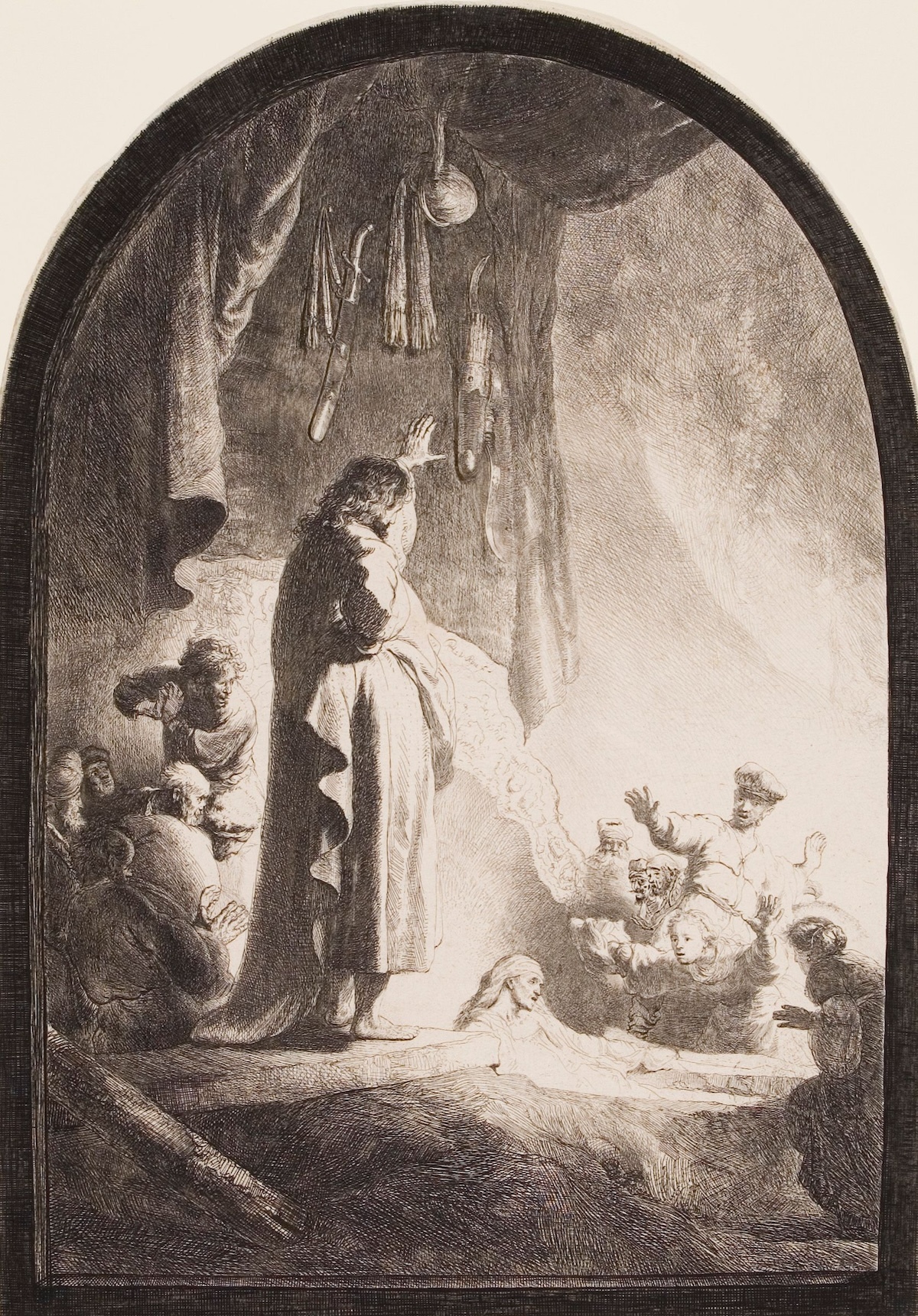
Dear friends,
For this Laetare Sunday of Lent, as we continue to pair art from our partners at the Raclin Murphy Museum of Art with prayerful reflections from members of our community, Karen Morris, associate professor of the practice with the Institute for Educational Initiatives, reflects on Raising of Lazarus by Rembrandt van Rijn.
We hope that this cross-campus partnership offers us all a welcomed space to practice Visio Divina, or sacred seeing, and through the lens of art consider this Lenten season anew. We recommend taking time to visit the Museum in person to encounter and connect to the art in a deeply meaningful way.
May God continue to bless you, your communities, and your families in this holy season of Lent.
~ The Institute for Educational Initiatives and the Alliance for Catholic Education

Rembrandt van Rijn, (Dutch, 1606–1669), Raising of Lazarus, ca. 1632, Etching with burin (Watelet retouch) on laid paper, 14 ¾ x 10 ¼ in. Raclin Murphy Museum of Art, University of Notre Dame. Gift of Mr. and Mrs. Jack F. Feddersen, 1991.025.044
On the periphery of a miracle
Reflection offered by Karen Morris, associate professor of the practice, Institute for Educational Initiatives
As we progress through the liturgical seasons, I often place myself in the shoes of those who interacted with Christ, striving to walk the faith that they display. During Lent, this personal pilgrimage converges on the Gospels and the people that surround Christ on his journey from crucifixion through resurrection. This Sunday’s reading is the raising of Lazarus from the dead, and while Lazarus is the focus, I am drawn more to those who are on the periphery of this miracle — strikingly shown in this Rembrandt etching.
What draws my attention is not the large image of Christ, whose back is to the viewer, but toward Lazarus and those facing Christ, bathed in the light of His love. I am struck by the woman — is it Mary or Martha? — as her body portrays the awe of seeing her brother roused from the sleep of death. Her hands and arms are outstretched to hug but her eyes are wide and her mouth open as if stunned. The man behind her is similarly shocked and seemingly indecisive — his body pulling backward while his hand reaches forward. This tension that their bodies display is palpable; they pull away in fear about something they don’t understand but still move forward to embrace their beloved.
What would I do? To return to Rembrandt’s etching, would I embrace this beloved one as he rejoins the living? Would I cower in the shadow like the characters behind Christ, afraid and condemning? Or would I bathe in the light of the realization of a Lord whose love is stronger than death, as those in front of Him? For me, the questions illuminated by Rembrandt’s etching awaken the Lazarus story in a way that enriches and challenges my Lenten journey. This unexpected detour is a new opportunity for me to contemplate how we might turn towards, instead of away from, the light of Christ’s enduring love.
 Alliance for Catholic Education
Alliance for Catholic Education